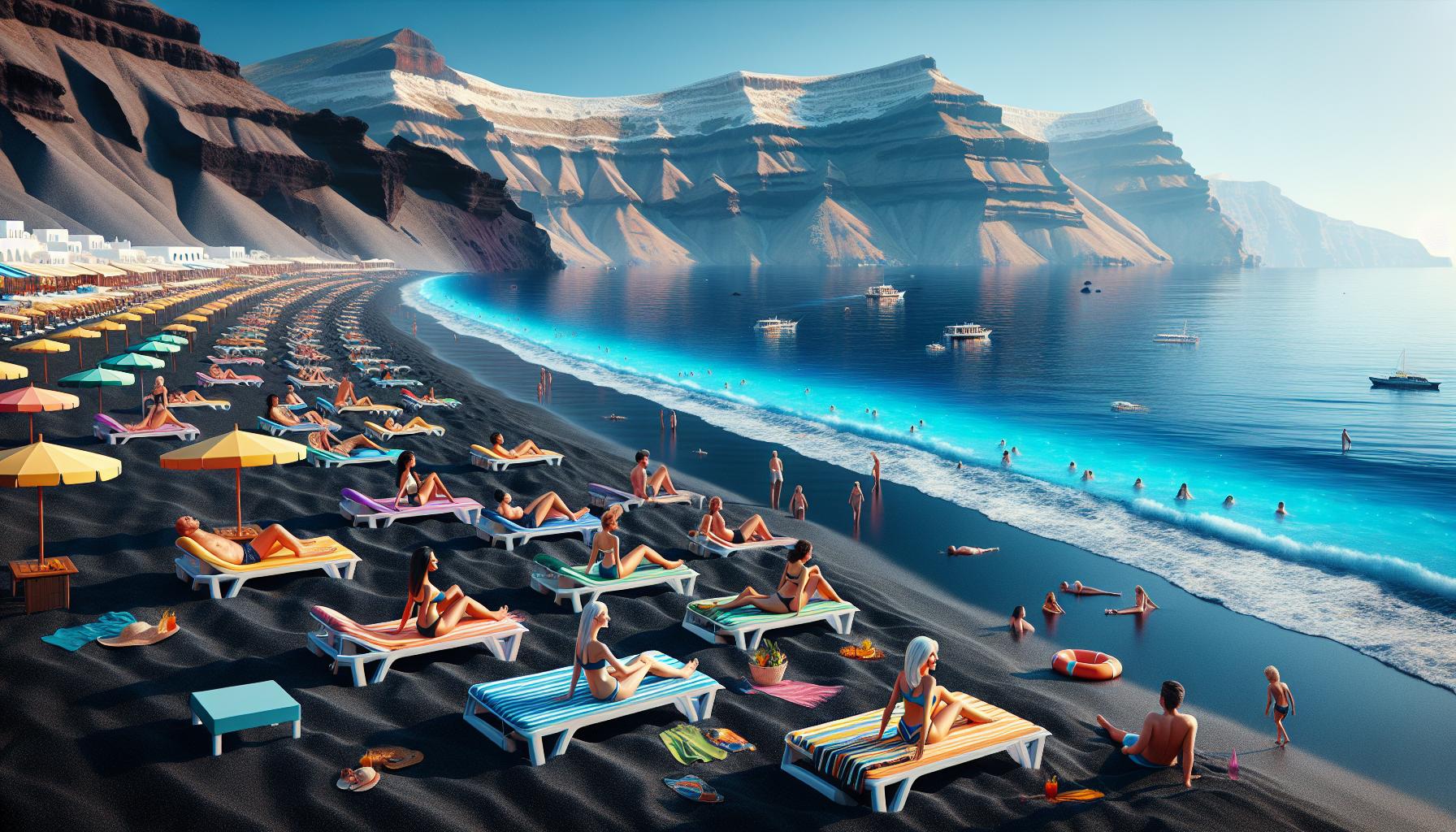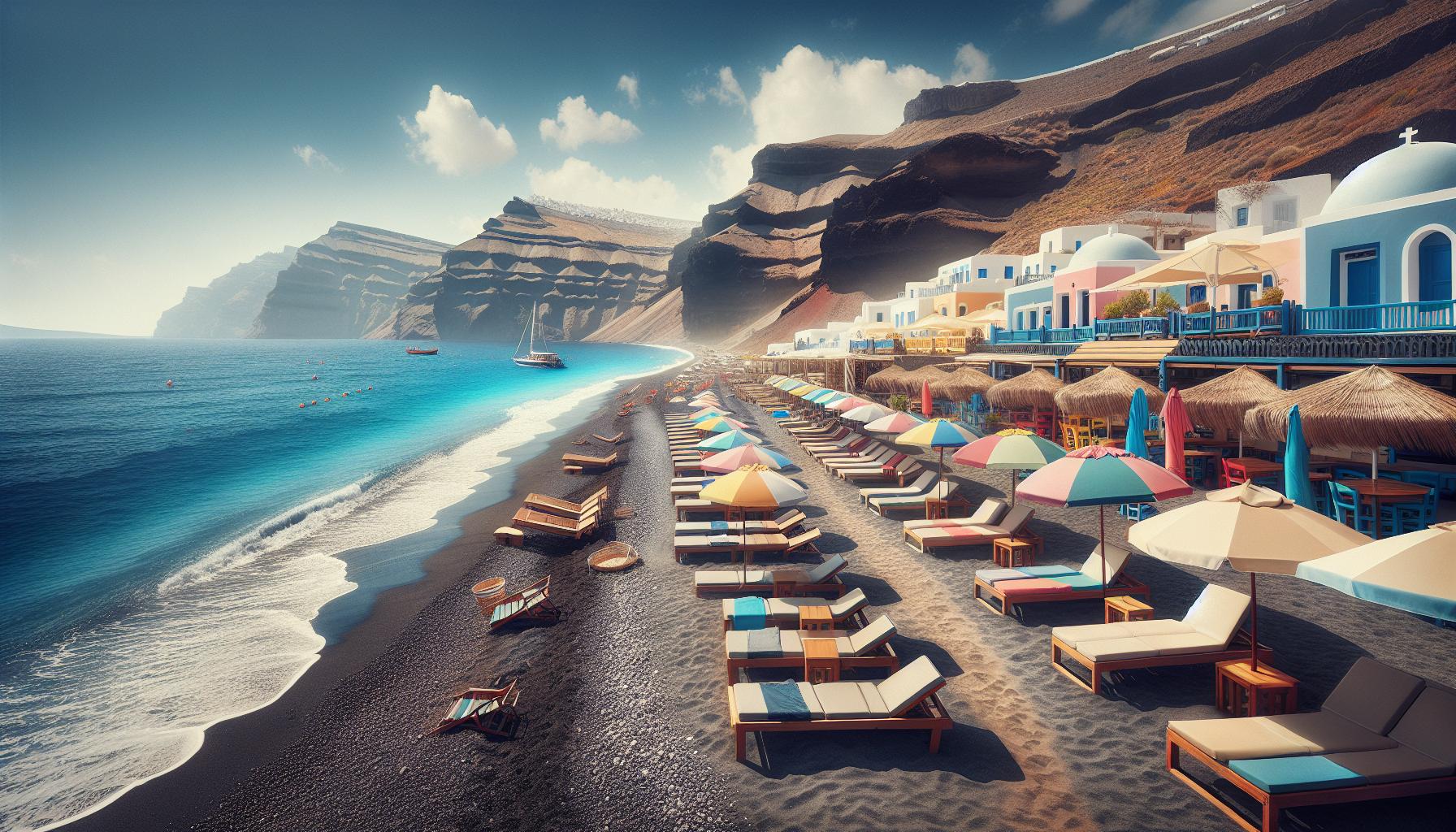Phone:
(701)814-6992
Physical address:
6296 Donnelly Plaza
Ratkeville, Bahamas.

When most people think of Greek beaches they picture pristine white sand and crystal-clear waters. But there’s a darker more mysterious side to Greece’s coastline that’s equally mesmerizing – the black sand beaches. These volcanic treasures stretch across several Greek islands offering visitors a unique and Instagram-worthy beach experience.
Created by centuries of volcanic activity these ebony shores aren’t just a pretty face. The dark sand absorbs heat making these beaches nature’s own hot stone therapy session. From Santorini’s famous Perissa Beach to Kamari’s volcanic coastline these distinctive shores have become bucket-list destinations for beach enthusiasts and photographers alike. The contrast between the jet-black sand and the azure Mediterranean waters creates a dramatic landscape that’ll make anyone’s vacation photos pop.
Black sand beaches in Greece feature distinctive volcanic minerals including magnetite, basalt, obsidian. These minerals create a striking contrast against the azure Mediterranean waters, setting them apart from traditional golden beaches.
The sand’s composition offers natural therapeutic benefits:
Geological characteristics define these beaches’ uniqueness:
The surrounding landscape enhances their appeal:
| Mineral Component | Percentage | Benefits |
|---|---|---|
| Magnetite | 40-50% | Heat retention |
| Basalt | 30-35% | Therapeutic properties |
| Obsidian | 15-20% | Exfoliation |
| Other minerals | 5-10% | Mineral enrichment |

Santorini’s volcanic landscape creates three distinctive black sand beaches, each offering unique features for beachgoers. These coastal gems combine dramatic cliffs with crystal-clear waters against striking volcanic sand.
Perissa Beach stretches 7 kilometers along Santorini’s southeastern coast, featuring fine black volcanic sand. Ancient Thera’s ruins tower above on Mesa Vouno mountain, providing a dramatic backdrop to the beach. Sunbeds line the shoreline while beach bars serve refreshments throughout the day. Clear waters make this spot ideal for swimming snorkeling. Blue Flag certification ensures high environmental standards water quality. The beach connects to the promenade lined with traditional tavernas seafood restaurants boutique shops.
Perivolos Beach extends from Perissa’s southern end, creating a continuous 3.5-kilometer stretch of black sand. Crystal-clear waters maintain consistent depths, perfect for swimming water sports. The beach offers organized facilities including volleyball courts water sport rentals diving centers. Modern beach clubs line the shore, playing ambient music serving international cuisine. The area transforms into a vibrant nightlife destination after sunset, with beachfront bars hosting DJs live entertainment.
Kamari Beach spans 5 kilometers along Santorini’s eastern coast, bordered by Mesa Vouno mountain. The promenade features a pedestrian walkway lined with shops restaurants cafes. Organized beach facilities include umbrellas loungers showers changing rooms. Water sports enthusiasts enjoy activities like jet skiing parasailing windsurfing. The beach earned Blue Flag status for its pristine waters environmental management. Evening open-air cinema screenings provide entertainment against the backdrop of illuminated cliffs.
Black sand beaches in Greece emerge through volcanic processes that span millions of years. These distinctive shorelines result from the continuous interaction between volcanic activity and coastal erosion.
The formation of black sand begins with submarine volcanic eruptions in the Aegean Sea. Molten lava encountering cold seawater creates rapid cooling that shatters the rock into tiny fragments. Ocean currents transport these fragments to coastal areas where waves grind them into fine black sand particles. The Hellenic Volcanic Arc, stretching from Methana to Nisyros, produces the majority of Greece’s volcanic materials. Active volcanoes like Santorini’s caldera contribute fresh volcanic matter through periodic eruptions, replenishing the black sand deposits along nearby coastlines.
The black sand contains distinct volcanic minerals that give it its characteristic dark color. Magnetite comprises 40% of the sand composition, providing magnetic properties detectable with simple magnets. Basalt fragments make up 35% of the mixture, contributing to the sand’s durability. Additional components include:
| Mineral | Percentage |
|---|---|
| Magnetite | 40% |
| Basalt | 35% |
| Obsidian | 15% |
| Other minerals | 10% |
These minerals originate from cooled magma containing iron-rich compounds oxidized during volcanic processes. The dark coloration comes from high concentrations of iron oxide minerals formed under intense heat during volcanic activity.
The optimal timing for visiting Greek black sand beaches depends on temperature preferences and desired crowd levels. These volcanic shores offer unique experiences across different seasons.
Summer temperatures on Greek black sand beaches reach 35°C (95°F) during peak hours from June through August. The black sand absorbs more heat than regular beaches, creating surface temperatures up to 15°C higher than ambient air. Spring (April-May) maintains comfortable temperatures between 20-25°C (68-77°F) with water temperatures around 19°C (66°F). Fall (September-October) offers warm waters at 23°C (73°F) with pleasant air temperatures around 25°C (77°F). Winter months experience temperatures between 10-15°C (50-59°F) with occasional rainfall, making beach activities less appealing.
July through August marks the peak tourist season with maximum hotel occupancy rates above 90%. Mid-June sees the start of increased visitor numbers, while September experiences a gradual decline. May through June attracts 40% fewer visitors than peak months, offering reduced accommodation rates. October through April sees minimal tourist activity, with many beach facilities operating on limited schedules. Shoulder season months (May-June, September-October) combine moderate crowds with comfortable temperatures, creating ideal conditions for beach exploration.
Visiting Greece’s black sand beaches requires specific preparation to ensure comfort and safety. The unique properties of volcanic sand create distinct conditions that differ from typical beach experiences.
Greece’s black sand beaches stand as remarkable natural wonders that offer more than just a unique aesthetic appeal. These volcanic shores provide an extraordinary beach experience with their therapeutic properties therapeutic qualities and stunning landscapes.
Whether visitors choose the popular stretches of Perissa Perivolos or Kamari they’ll find well-maintained facilities and crystal-clear waters perfect for both relaxation and adventure. The combination of volcanic minerals natural healing properties and breathtaking scenery makes these destinations truly unforgettable.
Planning a visit during the shoulder seasons while following essential safety tips ensures the most enjoyable experience on these distinctive shorelines. These magical black sand beaches aren’t just destinations – they’re gateways to experiencing Greece’s volcanic heritage in its most beautiful form.